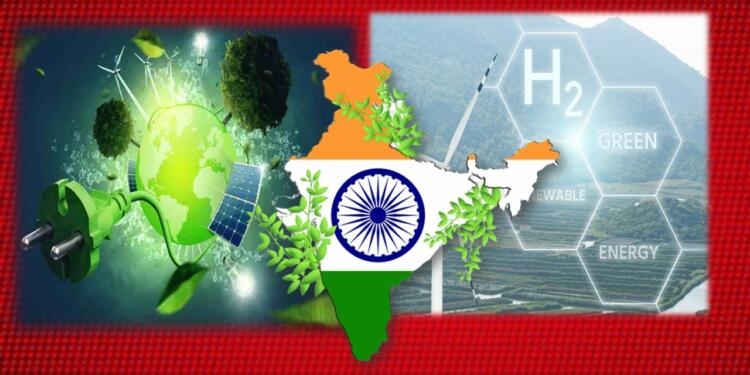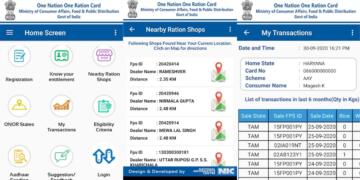Dependence on foreign nations for energy security is just like putting your jugular in the hands of someone else. An erratic decision to radically change the status quo could have choked our raw nerve, leaving us gasping for fresh air to meet our basic needs. It is when seen in that pragmatic sense, India’s current development and the future prospects in energy security stand apart in the greatest success stories of all time.
Charting the non-conventional route
Post-Independence, Indian energy requirements have grown by leaps and bounds. The nation has seen a remarkable transformation from a power deficit to a power surplus. Currently, India has an installed electricity capacity of over 408.72 gigawatts, which is increasing at a tremendous pace.
For the better part of seven decades, fossil fuels drove India’s growth story. But unlike the self-centred West, India couldn’t afford to grow at the expense of the environment. This consequently led to an ever-increasing share of renewable energy in the larger scheme of things. The beginning of renewable energy was led by hydropower, with major hydroelectric power projects increasing their presence in India’s energy arena.
However, this snail pace increase in renewable energy could only lead to one of two things: either India’s growth would have been non-eco-friendly, similar to Western one, or environmental constraints due to climate change would have hampered India’s development trajectory. As per 2014 World Bank data, Energy (Electricity plus Vehicular and other needs) production from fossil fuels accounted for around 73.6% of the total energy needs of India. This would put renewable’s share at around 26.4% by 2014. Similarly, in 2014, Electricity production from coal accounted for 74.5% of the total Electricity produced that year.
Also Read: From oil to fertilisers, India is numero uno for Russia
When the Modi government took charge in 2014, things started to gain substantial pace. For example, in the last 8.5 years, India’s installed renewable energy capacity has increased by 396%. Now, with a current installed capacity of 159.95 Giga Watts (including large hydro), renewable energy accounts for around 40%+ of the country’s total Energy capacity. Today, India is the third largest producer of renewable energy in the world.
Future stellar growth in renewable energy can be gauged from the fact that India has committed a NDC target of increasing our renewables capacity to 500 GW by 2030. This is a huge feat as it is greater than our current installed electricity capacity (408GW). Further, the Modi government has committed to meeting 50% of our energy requirements from renewable sources.
Additionally, with an aggressive march to achieve our NDC (Nationally Determined Contributions) targets, the Modi government has successfully brought down the contribution of coal from 74.5 to 49.9% in times when our energy needs are increasing at an unprecedented rate.
Achieving self-reliance through the renewable sector
The dependence on import was the other main drawback of fossil fuels. Unfortunately, this provided a tremendous amount of leverage that could be exploited by foreign nations at will. Fossil fuels had to be consumed regularly to keep producing energy, thus creating an undesirable, endless cycle of dependence. But this changes with renewable sources.
This is why the future prospects of the Indian Energy Basket are promising, as it will be purely self-reliant. Using wind, solar, nuclear, lithium-ion, or hydrogen-fueled vehicles (instead of diesel or petroleum-fueled vehicles) means non-recurrent issues of dependence and full self-reliance if the nation gets the technology prowess in that sphere.
Also Read: The Arabs are now on their knees to please India
Currently, India is dependent on foreign imports for the raw materials for the production of energy from renewable sources. For instance, the major focus of the Modi government in renewable energy has been solar. In this sector, India is importing solar cells and modules from China and Vietnam, but the nation is rapidly bridging the technological gap. The government has been taking steps to boost our domestic players, for example, by tweaking import duties on such imports.
Phenomenal progress in solar energy
It is a fact that at this moment in time, India has to import solar panels and other essentials, but the nation is a major player in this sector. On account of being the co-founder of the International Solar Alliance, India has achieved a strong voice in this sphere, which can regulate the industry if the exporting nation tries to play dirty on account of their exports, which takes away any leverage they could have.
Yet the Modi government is working tirelessly to achieve self-reliance in this sphere. It specifically started the PLI scheme for solar manufacturing, which has been receiving more and more support from the Union government.
Also Read: India just quadrupled its PLI scheme in solar energy and it’s a surgical strike on China
In the last 8.5 years, the installed solar energy capacity has increased by 19.3 times. As per the Power Ministry, the installed solar energy capacity is nearly 62 GW, which accounts for around 15% of the total power of the nation.
Aggressive push for Green Hydrogen
Although the National Hydrogen Mission was launched in 2013, it lacked the crucial pace it needed to achieve its target of making India the world’s largest hydrogen hub. Rather than being an EV enthusiast, Union Transport Minister Nitin Gadkari has put his entire weight behind the use of Green Hydrogen.
The Modi government has been constantly creating a conducive environment for more and more industries to go aggressively into the Green Hydrogen industry. If the bet turns out to be to our advantage, the nation will have found the perfect alternative to replace petroleum-related products to fuel our vehicles, thus achieving self-reliance in one of the major components of energy security.
Also Read: West Asia cannot survive a week without India’s support- A data-driven analysis
Apart from capital infusement by major industrialists like Ambani, Adani, and others, the Modi government recently approved the National Green Hydrogen Mission. It gave an initial outlay of Rs. 19,744 crore to further boost the sector. This includes an estimate of Rs 17,490 crore for the SIGHT programme, Rs 1,466 crore for pilot projects, Rs 400 crore for research and development, and Rs 388 crore for other mission components.
Apart from the big push on Solar and Green Hydrogen, the Modi government has been actively looking to find other alternatives as well, which either completely makes us self-reliant in that sphere or reduces our dependence on foreign nations for the time being. In this active search, India has recently found success in independently identifying two new mines with cobalt and lithium in the South American nation of Argentina.
Lithium is the key component used for making lithium-ion batteries for EVs. However, China has made sweeping domination in this sphere. But the recent discovery is a major achievement, as the Indian government is strongly mulling to either acquire or lease those mines to have strategic autonomy in these mines.
Without a proper alternative plan to meet our growing energy needs, India’s dream of becoming a Superpower would have been left dry at the mercy of imported oil and other resources. But with the rapid increase in the renewable sector and a diversified energy basket (renewable + non-imported coal, petroleum products, etc.), the Modi government is making sure that India will have a purely indigenous Energy basket in the near future courtesy of a massive increase in renewable energy.
Support TFI:
Support us to strengthen the ‘Right’ ideology of cultural nationalism by purchasing the best quality garments from TFI-STORE.COM


































